
Lerema accius (clouded skippers)

Helicoverpa zea (corn earworm moth)
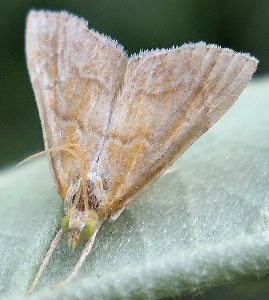
Aethiophysa invisalis (moth)

Oiketicus abbotii (bagworm pupa)
| This large bagworm (a kind of moth caterpillar) ate most of several Frostweed leaves, while also attaching bits of them to its silk "bag" as camouflage. The dry condition of the leaf bits on the bag indicates that the insect stopped feeding several days ago. It used silk to attach itself to the central vein of the leaf, an appropriate location to mimic an extension of the damaged plant. |

Boopedon gracile (graceful range grasshopper nymph)

Lactista aztecus (Aztec bandwing)

Cycloneda sanguinea (red lady beetle)
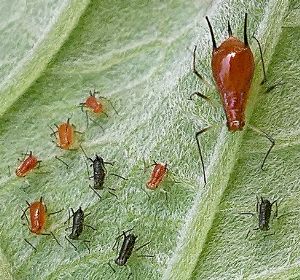
Uroleucon sp. (aphids)
| Aphids reproduce both sexually and asexually. The large female shown here has produced all the little offspring by simply giving birth to live young, no egg or mate required. Sexual reproduction occurs later in the year, usually after colony numbers are higher. |
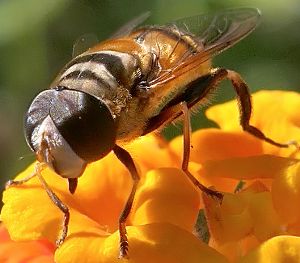
Palpada vinetorum (flower fly)
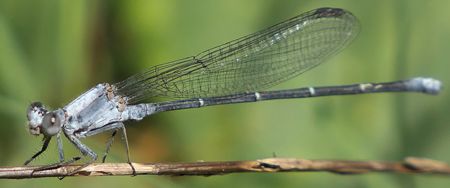
Argia moesta (powdered dancer)
| Males of this damselfly species actually have a black stripe down the center of their thorax, a feature only visible on very young individuals. The whitish pruinosity that is the basis for the common name develops very quickly, completely obscuring underlying markings. |
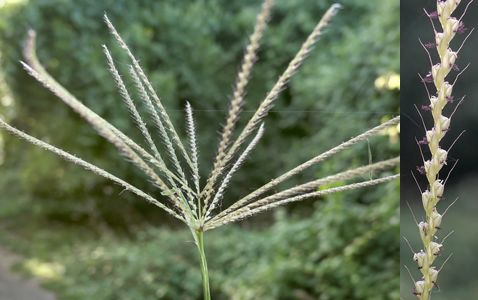
Chloris verticillata (tumble windmill grass)
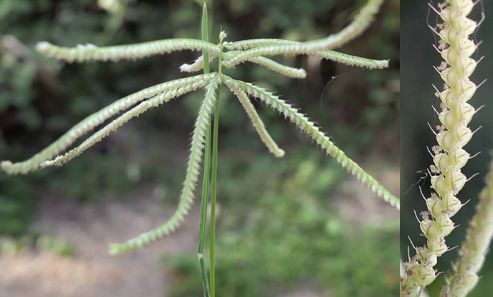
Chloris cucullata (hooded windmill grass)

Cynodon dactylon (Bermuda grass)
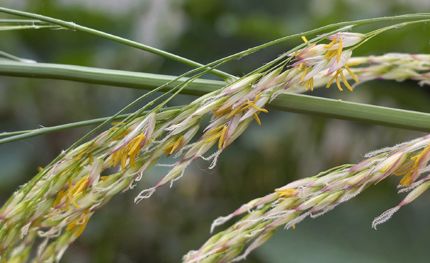
Zizaniopsis miliacea (giant cutgrass)

Helenium amarum (brown & yellow bitterweed)
| At one time, these two color forms were considered separate species, but are now generally regarded to be simply variation. |
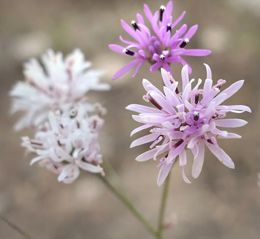
Palafoxia callosa (small palafoxia)
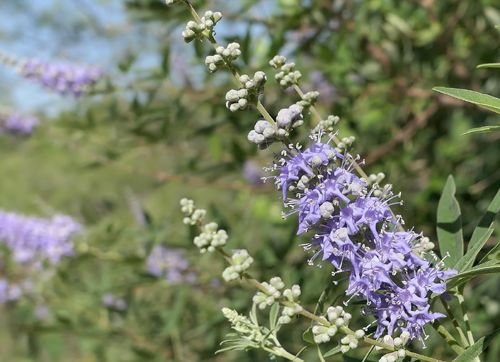
Vitex agnus-castus (vitex)
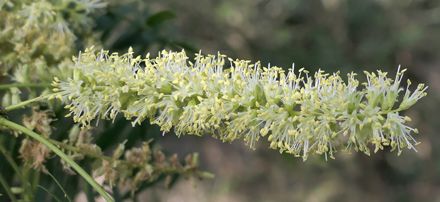
Prosopis glandulosa (honey mesquite)
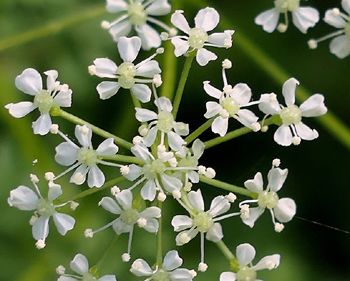
Daucosma laciniata (meadow parasol)
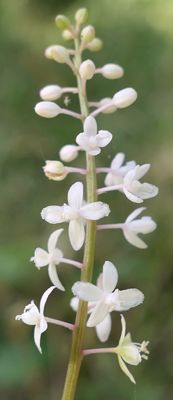
Rivina humilis (pigeonberry)

Phyla nodiflora (Texas frogfruit)

Teucrium canadense (American germander)
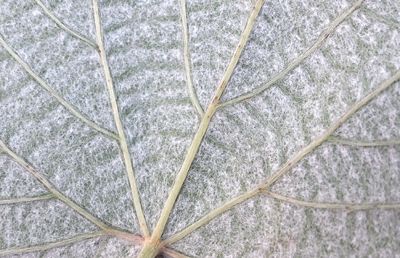
Vitis mustangensis (mustang grape)
| This view of the underside of a leaf shows the white fuzz that makes it very easy to distinguish this species from other grapes in our area. |

Pangaeus sp. (burrowing bug)
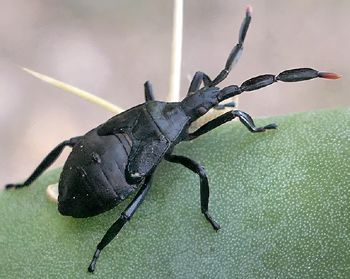
Chelinidea vittiger (opuntia bug nymph)

Mozena obtusa (mesquite bug)
| Many true bugs that feed on plants utilize a number of different hosts, but some, such as the two above, are quite specific. Mesquite Bugs do sometimes occur on closely related species, such as Huisache, but I cannot recall ever seeing Opuntia Bugs feed on anything but their namesake. |
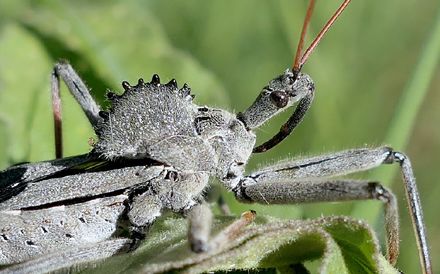
Arilus cristatus (wheel bug)
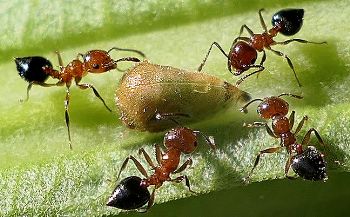
Crematogaster laeviuscula & Vanduzea sp. (acrobat ants & treehopper)
| Producing honeydew as it feeds, this treehopper has the protection of ants that may spend less time foraging and performing duties at their nest simply because they find the sugary liquid so attractive. |
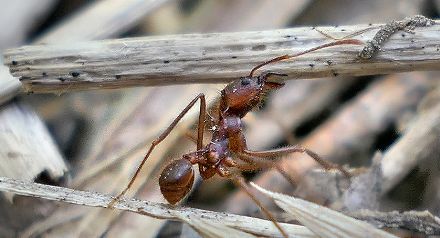
Atta texana (Texas leafcutter ant)
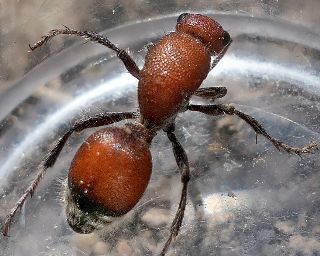
Dasymutilla vesta (velvet ant)

Dasymutilla waco (velvet ant)
| Velvet ants are flightless female wasps in the family Mutillidae which are capable of inflicting painful defensive stings. They lay their eggs in the nests of solitary wasps and bees. The next image shows a potential victim of this parasitism. |
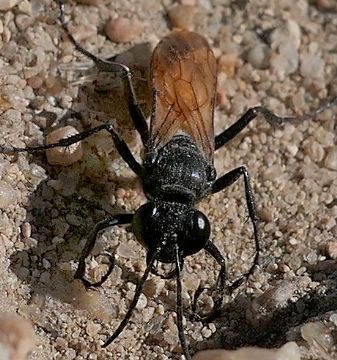
Sphex lucae (digger wasp)
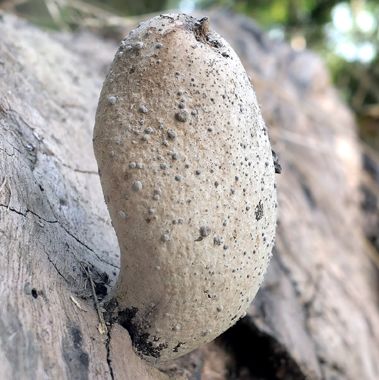
Xylaria poitei (fungus)
| A sporocarp is the spore-producing fruiting body of a fungus, such as the 3-inch tall growth shown here. The vegetative part of the organism is the mycelium, which is a network of fine filaments, in this case growing in and helping decompose a chunk of dead wood. |

![]()